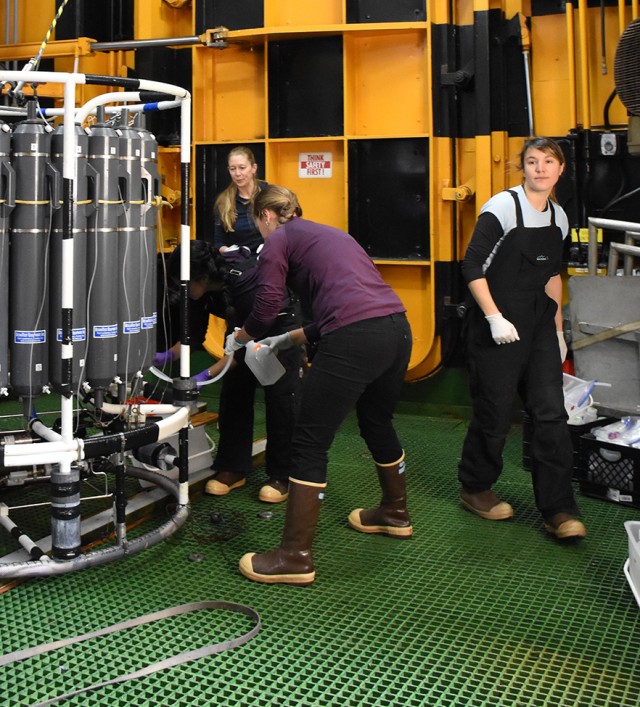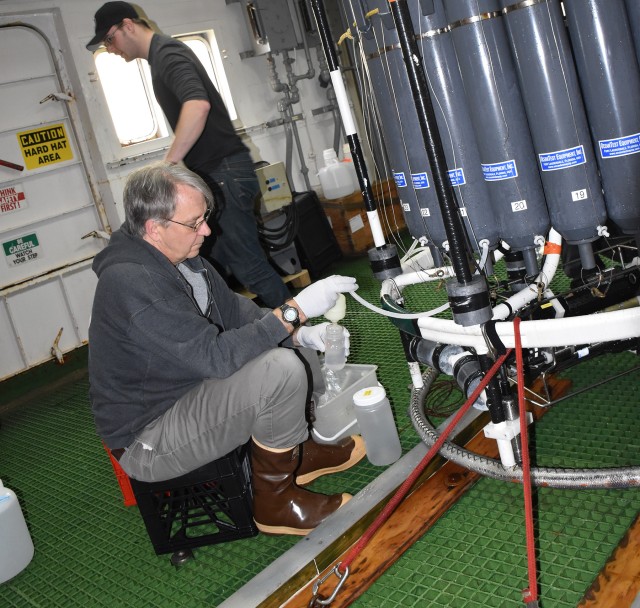Little Diatoms, Big Impact

Scientists create an international dataset of silicon weight standards to better study diatoms and their contributions to the carbon cycle.
With their beautifully intricate silica shells, diatoms are responsible for 20% of the total photosynthesis on our planet—or one fifth of every breath that is taken. Diatoms form their ornate opal shells using silicon that they get from seawater, so the availability of silicon in the ocean can control where diatoms can grow and thrive.
Because of diatoms’ dependency on silicon, scientists have taken an interest in the role dissolved silicon availability plays in diatom ecology, and how it affects their contributions to the Earth’s carbon cycle.

In order to more accurately make discoveries about the role of diatoms on our planet, eleven laboratories from seven countries collaborated to create one large collective dataset of silicon weight standards for scientists around the world to compare their own data with. Now, scientistscan reference these values to make sure they are “getting the right number” for their own samples. The weight of silicon can vary, and diatoms have shown to prefer lighter versions of silicon to their heavier counterparts. This is important because the weight and composition of the silicon can be used to quantify diatom productivity. Because of the contributions diatoms make to oxygen production, understanding how their productivity is influenced by silicon in the ocean is essential to ensuring their longevity. This intercalibration study was published by Dr. Mark Brzezinski’s laboratory as a contributionto the international GEOTRACES program.